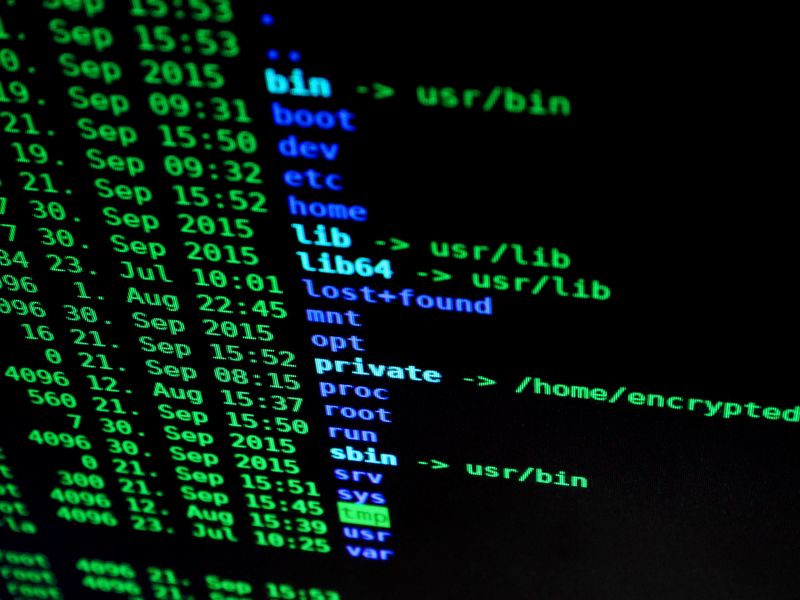A Proliferation of Cyber Attacks Against USPS Raises Concerns
A Growing Threat
In recent weeks, a wave of cyber attacks targeting the United States Postal Service (USPS) has become alarmingly pervasive. Threat actors are employing smishing (text message-based phishing) and phishing tactics to deceive individuals and exploit their vulnerabilities. While these types of attacks are not uncommon, the number of campaigns has surged, with close to 200 different domains serving as infrastructure for these malicious activities.
An Investigation Unveils Disturbing Insights
Concerned by the scale of these attacks, researchers at DomainTools conducted an investigation to better understand their nature and assess the potential damage they could inflict. In their search, they analyzed the email addresses used in the smishing messages and made some striking discoveries. One particularly concerning finding was the use of unique email addresses with a backslash feature, which was tied to a considerable number of domains. For instance, the email address “mehdi\.kh021@yahoo[.]com” was linked to 71 domains, and another address, “mehdi.k1989@yahoo[.]com,” differing by just five characters, was associated with 63 domains. In total, the researchers uncovered 164 domains currently being employed in this malicious campaign.
Furthermore, the researchers noted that one smishing message, likely the product of a reused script written by a non-native English speaker, employed suspicious phrasing. It was clear that the threat actor behind these attacks had not yet utilized advanced AI techniques, such as ChatGP, which could have significantly enhanced the message’s credibility and potentially led to even greater harm.
Recognizing the Flaws and Implications
Experts have pointed out inherent vulnerabilities and security flaws in these attacks. Roger Grimes, a data-driven defense evangelist at KnowBe4, stated that the USPS SMS scam messages have become all too familiar in recent weeks. Perpetrators employ typical “normal” smishing scams, employing a straightforward tactic claiming package delays and urging recipients to click on a link to resolve the issue. As Grimes accurately emphasizes, these attacks rely on their sheer ordinariness, making them incredibly realistic and dangerous.
Another disconcerting detail is the lack of operational security (OpSec) demonstrated by the threat actors. Researchers discovered that some of the email addresses used in the campaign were linked to social media accounts, further exposing the individuals behind these attacks. In fact, a Facebook account associated with the domains under investigation indicated that the threat actor is an Iranian national residing and working in Tehran. The individual may have attended the Islamic Azad University.
The Ongoing Threat to Individuals and Organizations
Phishing and smishing campaigns have unfortunately become an unavoidable aspect of our daily lives. These malicious activities pose a significant threat not only to individuals but also to the companies and organizations whose services they exploit. As the researchers at DomainTools rightly pointed out, identifying the infrastructure deployed in such campaigns and uncovering the actors involved are crucial steps towards swiftly mitigating the threat they present. This information is vital for law enforcement agencies and other organizations working to combat cybercrime effectively.
Editorial: Strengthening Cybersecurity Measures
The Urgency to Adapt and Innovate
The rising number of cyber attacks targeting institutions like the USPS demands urgent action. In an increasingly digital world, malicious actors are continually evolving their techniques and leveraging new technologies to exploit unsuspecting victims. To combat this threat effectively, individuals and organizations must prioritize internet security and adapt their approach to cybersecurity accordingly.
Human Vigilance and Cyber Education
Cybersecurity efforts should begin with comprehensive education and awareness campaigns. Individuals need to be educated about the risks posed by phishing and smishing attacks and be provided with practical tips to protect themselves. Promoting a culture of cybersecurity within organizations is equally crucial, as employees need to be vigilant and proactive in identifying and reporting potential threats.
Implementing Advanced AI Techniques
As the threat actors in the USPS campaign have yet to adopt advanced AI techniques, there is a vital window of opportunity to leverage AI for cyber defense. Investing in AI-powered solutions can significantly enhance threat detection capabilities, providing real-time analysis and responses to rapidly evolving attacks. This technology can augment human efforts, strengthen security measures, and defend against increasingly sophisticated cyber threats.
Public-Private Collaboration
Fighting cybercrime requires collaborative efforts among individuals, private organizations, and government agencies. Information sharing, mutual assistance, and coordinated responses are essential for staying ahead of cyber adversaries. Law enforcement agencies, cybersecurity firms, and technology companies should work together to exchange intelligence, develop innovative solutions, and disrupt the operations of threat actors.
Conclusion
The recent surge in cyber attacks against the USPS demands immediate attention from all stakeholders involved. Individuals must remain vigilant and stay informed about emerging cybersecurity threats, while organizations need to prioritize the adoption of advanced security measures and promote a resilient cybersecurity culture. By combining human vigilance, advanced AI technologies, and a collaborative approach, we can fortify our defenses and mitigate the risks posed by these malicious campaigns. Only through collective action can we secure our digital future and protect ourselves from the ever-evolving landscape of cyber threats.

<< photo by Petter Lagson >>
The image is for illustrative purposes only and does not depict the actual situation.
You might want to read !
- The Rising Threat: How USPS Anchors Snowballing Smishing Campaigns
- New Malvertising Campaign: Trojanized IT Tools Found on Google and Bing Ads
- The Phishing Playground: How Facebook and Microsoft Became Prime Targets for Impersonation
- UAE-Linked ‘Stealth Falcon’ APT Mimics Microsoft in Homoglyph Attack: A Closer Look at State-Sponsored Cyber Espionage Tactics
- Unveiling the Elusive Tactics of the UAE-Linked ‘Stealth Falcon’ APT
- Qualcomm Takes Swift Action: Patching 3 New Zero-Days Under Active Exploitation
- The Rise of Dropbox: Threatening Microsoft SharePoint’s Security Reign
- Synqly: Revolutionizing Product Integrations for Enhanced Security and Infrastructure
- NATO Launches Investigation into Breach and Leaks of Internal Documents: Assessing the Impact and Response




